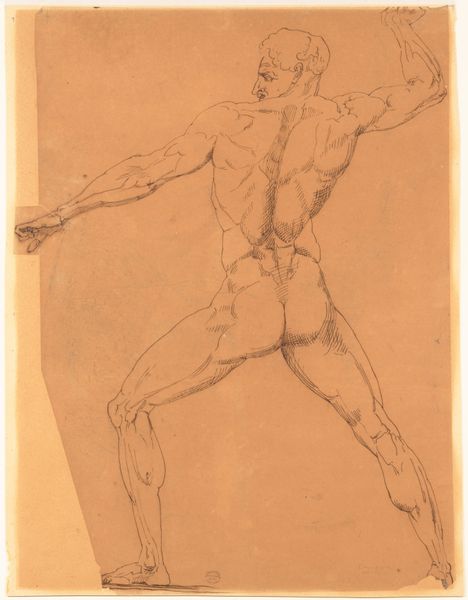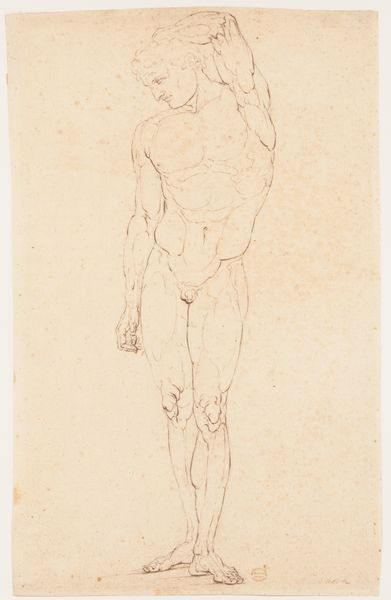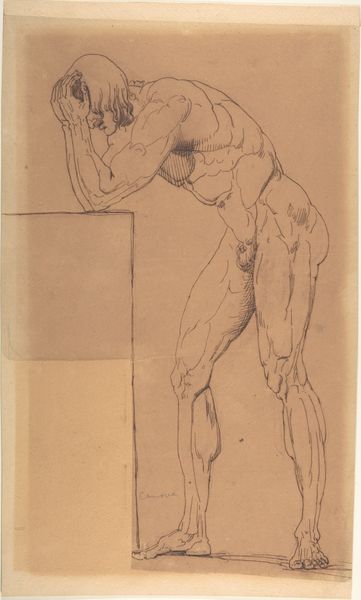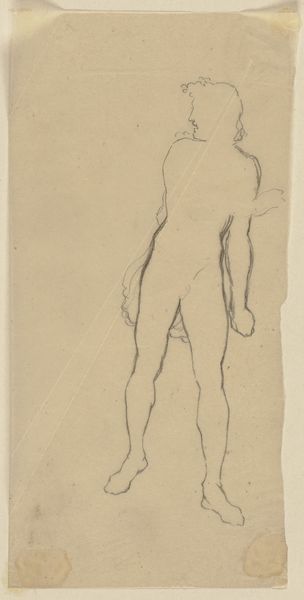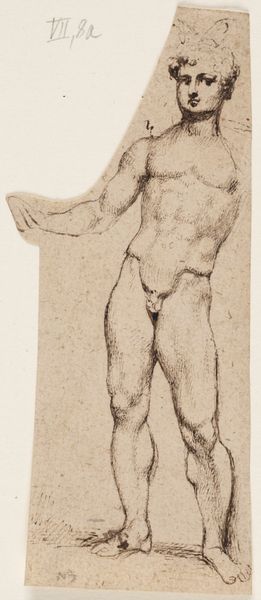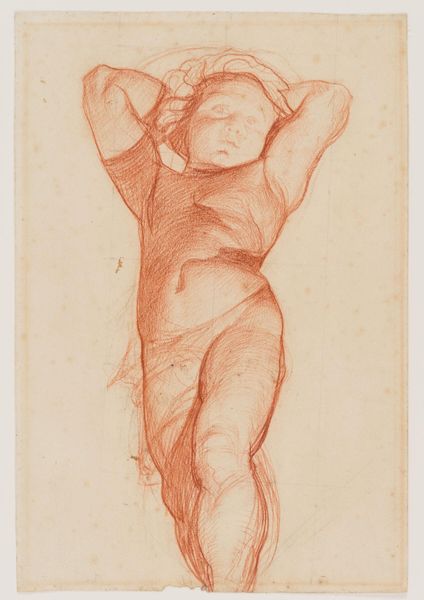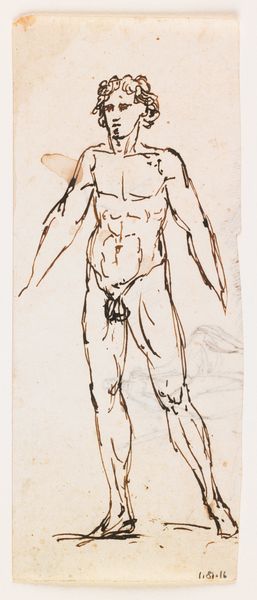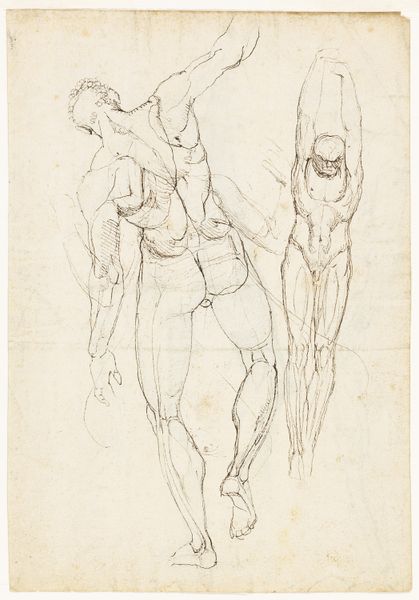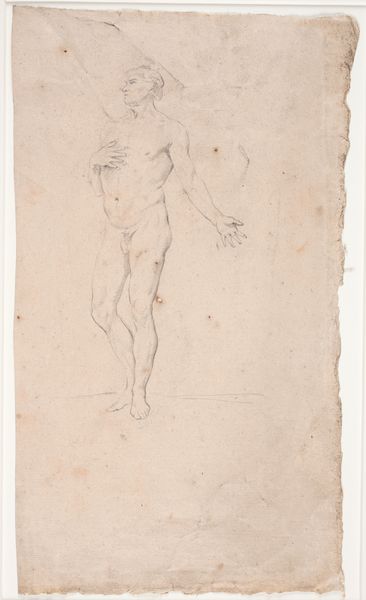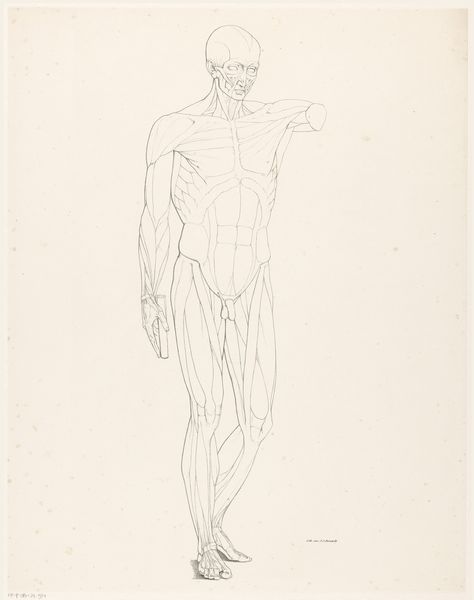
drawing, print, ink
#
drawing
#
ink drawing
# print
#
figuration
#
ink
#
academic-art
#
nude
#
male-nude
#
realism
Dimensions: 17 7/8 x 8in. (45.4 x 20.3cm)
Copyright: Public Domain
Curator: The artwork before us is a print titled "Standing Male Nude," created between 1800 and 1822. It's currently housed at the Metropolitan Museum of Art. Editor: It's remarkably detailed. I’m immediately drawn to the use of line, and the anatomical accuracy of the figure – a product of precise and intensive labor, I presume. The pose, so casual, contrasts intriguingly with the almost forensic quality of the rendering. Curator: Precisely! The artist's focus on anatomical study places it squarely within academic art traditions. However, it also provides fertile ground for exploring constructions of masculinity during this period. We can consider how the male nude functions within artistic and social discourse, particularly related to power, the body, and idealization. Editor: Yes, but think about the process; it looks like an ink drawing, transferred into a print—a reproducible medium, suddenly available outside the elite circles. The paper, the ink, even the printmaking process, would all reflect access and distribution shifts during this early 19th-century moment. It challenges ideas of artistic exclusivity. Curator: I agree. This allows us to delve into gender studies as it intersects with class dynamics, considering access and viewership. Whose gaze are we considering, and who gets to access this image? And who, historically, could afford this type of imagery? The material suggests a broader audience than a unique drawing. Editor: And what does it *mean* that it's a nude in print? How might the reproductive nature influence ideas of accessibility and perhaps devaluation of the subject matter as well? Was there any contemporary popularization or demystification through that access? Curator: We can contextualize that idea further, by questioning what labor went into this piece: Were these drawings used to study male anatomy, and in doing so perpetuate normative ideas of what an ideal body looks like? Moreover, it can challenge gender roles prevalent at the time, even today. How does this resonate within queer and feminist frameworks, considering issues of objectification, agency, and representation? Editor: Right. It prompts reflection on the hierarchies within the art world and production that often eclipse conversations of craft and the many labor components used in the act of image creation. Curator: It's in asking those complex questions, particularly concerning its cultural creation and labor behind its production that the artwork continues to resonate today. Editor: Absolutely, viewing art in that framework of creation lets us consider those questions.
Comments
No comments
Be the first to comment and join the conversation on the ultimate creative platform.

